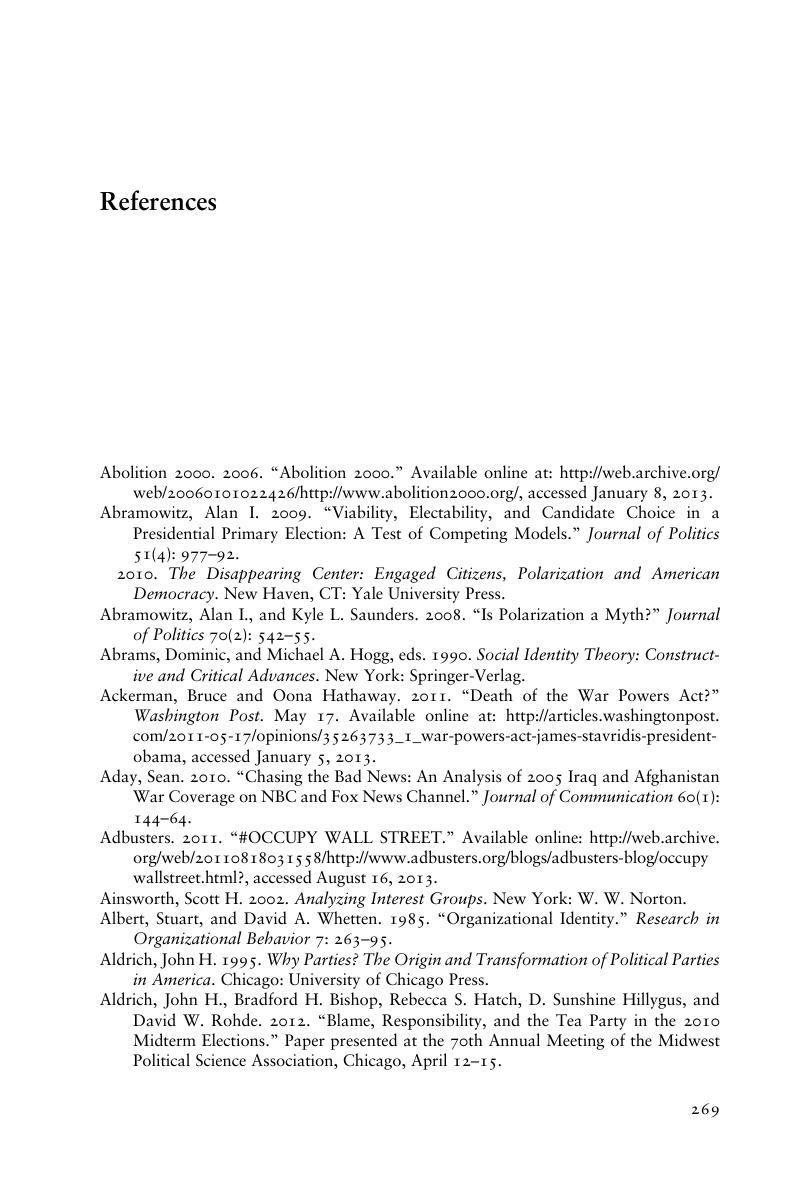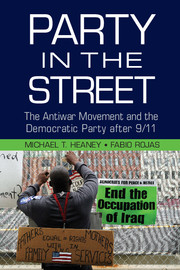Book contents
- Frontmatter
- Dedication
- Contents
- List of Tables
- List of Figures
- List of Abbreviations
- Introduction
- 1 The Party in the Street and Its Historical Context
- 2 Partisan Politics at the Water's Edge?
- 3 Multiple Identities and Party-Movement Interaction
- 4 Identities and Grassroots Participation
- 5 Identities and Organizational Action
- 6 Identities and Legislative Agendas
- 7 Beyond the Antiwar Movement and the Democratic Party
- 8 Social Movements in a Polarized America
- Epilogue
- Appendixes
- References
- Index
- References
References
Published online by Cambridge University Press: 05 February 2015
- Frontmatter
- Dedication
- Contents
- List of Tables
- List of Figures
- List of Abbreviations
- Introduction
- 1 The Party in the Street and Its Historical Context
- 2 Partisan Politics at the Water's Edge?
- 3 Multiple Identities and Party-Movement Interaction
- 4 Identities and Grassroots Participation
- 5 Identities and Organizational Action
- 6 Identities and Legislative Agendas
- 7 Beyond the Antiwar Movement and the Democratic Party
- 8 Social Movements in a Polarized America
- Epilogue
- Appendixes
- References
- Index
- References
Summary

- Type
- Chapter
- Information
- Party in the StreetThe Antiwar Movement and the Democratic Party after 9/11, pp. 269 - 301Publisher: Cambridge University PressPrint publication year: 2015



